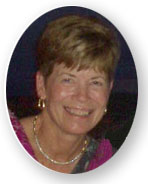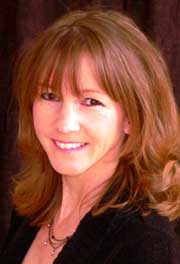 As an author, it’s always magical for me to see a finished picture book after months and months of back and forth emails with my editor over everything from text revisions to illustration sketches. SEA MONSTER AND THE BOSSY FISH, editor Melissa Manlove was instrumental in making this latest Sea Monster adventure a book that teachers, kids, and families will all appreciate, so I asked her if she’d take a little time out from editing to visit my blog today and talk about the process behind the picture book.
As an author, it’s always magical for me to see a finished picture book after months and months of back and forth emails with my editor over everything from text revisions to illustration sketches. SEA MONSTER AND THE BOSSY FISH, editor Melissa Manlove was instrumental in making this latest Sea Monster adventure a book that teachers, kids, and families will all appreciate, so I asked her if she’d take a little time out from editing to visit my blog today and talk about the process behind the picture book.
Hi, Melissa! First of all, thanks for stopping by to talk about Sea Monster. As you (and a lot of my blog readers) know, this is Ernest the Sea Monster’s second adventure. Signing up a sequel or companion book must be a big decision for an editor. What made you feel like Ernest the Sea Monster should have another story?
Sea Monster’s First Day went out in strong numbers–that’s always part of it. Publishers are also always on the lookout for characters that can build a line of books, and we have a soft spot for Ernest’s brand of silly sweetness.
As an editor, how do you approach a new manuscript that arrives in your in-box? Obviously, because we worked together on SEA MONSTER’S FIRST DAY, Ernest was no stranger to you, but I’m curious what your process looks like from the moment that file arrives. Do you start thinking about suggestions right away or read through a few times and let the thoughts marinate for a while?
It varies from book to book. Usually I need some time to think/process, if only to be sure I’m in touch with what the book’s heart is and what feedback is going to help the book become the truest version of itself.
One of things I most appreciate about your editing is the way you prompt changes by asking thoughtful questions. Here are a couple highlights from the first feedback I received from you on BOSSY FISH:
Could there be more fishy humor in the first half of the manuscript? Sea Monster’s first day was wall-to-wall fish jokes–something funny on each spread– as well as having a heart. Your humor is just right, too–accessible to these young kids, and still tickling to the parent-aged, readers-aloud-type people like me and you.
Could there be a little more set-up at the beginning? I worry you’re assuming your reader knows Ernest already from the previous book, but many people will discover this Sea Monster book first and then backtrack to First Day. We need a sense at the start of the story of who Ernest is and that he is the main character.
Could there be a touch more in the way of character arc? Ernest is not as hard-hit by these developments as he was in First Day; I’d like to see more clearly how and why he is emotionally invested in finding this resolution. A bit more of a black moment? However (!) I love that you didn’t go the clichéd route of making Ernest an immediate target for the bully. How can we keep that and still develop just a bit more of a crisis for Ernest?
So often, your feedback comes in the form of questions. Why do you feel like that’s the best way to prompt revision? (I have my own feelings on this as an author, but I’m curious about your thoughts from an editor’s perspective!)
I think that questions are among the editor’s most powerful tools–the use of questions emphasizes that the editor is open to discussion and disagreement. The questions I ask most often in the process of feedback are ‘Does that make sense?’ and ‘What do you think?’ because I am trying to help the writer achieve THEIR vision and reach THEIR audience. I want to make sure the author knows I don’t come to the editing process in a dictatorial frame of mind–I am here to assist in creation, but I am not one of the creators of the book. When an author communicates to me that I have really helped them to make their book into the book they wanted it to be–that’s when I am happiest in my job and proudest of my work.
What advice would you give others who want to help a writer to grow? I’m thinking of both teachers and writers in critique groups. What are your best tips for helping an author of any age to reconsider and improve his or her work?
Critique is useless when it is vague. I want to pinch people in critique groups when I hear ‘this is so cute’. Critique is also useless if it is entirely positive OR entirely negative. Neither kind will help a writer move forward and improve their work. Critique should always begin with specific, positive feedback. This is important for several reasons. I’m attaching the sheet I wrote for our interns about giving editorial feedback:
How to write an editorial letter
1. Start with the best. Identify the strengths of the book, the things to which the book’s audience will most connect. All of them. Be specific.
a. Because these qualities will be your pole star as you guide the book through the publishing process. Books change as they are developed. Having iterated to yourself at the beginning what the point and value of the book is will help you ask yourself whether each change along the way serves the true nature of the book.
b. Because when you iterate those things to the author, you gain the author’s trust. Authors are absolutely right to distrust anyone who does not see why the book is valuable, yet who wants to suggest changes. And authors are facing the difficult and sometimes painful process of revision. The admiration and excitement of a knowledgeable stranger—you—gives them fortitude and faith in the face of that process.
c. Because if you don’t iterate those things to the author, the author might change them during revision. Never assume the author sees the brilliance of their book, no matter how obvious it is to you. This is no criticism of authors—it is their job to see the trees. It is our job to see the forest.
2. Remind the author to argue with you. Remind the author that you want to hear her point of view, and to help her make this the book she wants it to be. This also builds trust, because it communicates that the author is in this process with a respectful partner—not with a general who will command or with a surgeon who will cut. Neither war nor medicine is a creative process. And this openness to disagreement builds trust because it communicates that you are not in this to make it the book you want it to be, but simply the best book it can be. There is no ownership in editing.
3. Ask questions. Editorial confidence opens pathways and facilitates decision-making, but editorial inflexibility is the enemy of creativity.
4. Point out problems, and explain specifically why you believe they are problems. But suggest solutions as questions. A suggested solution can help the author to understand better how you perceive the problem. But remember that the best solutions usually come from the author. Specifically communicate that if the author has different ideas for how to approach each issue, they are very welcome.
5. Think of each book as a thing of its own, with a soul and identity apart from any of the people involved in it. What does the book want to be?
6. Be grateful. We are each of us absurdly lucky to be working in this field.
I love this so much – thanks for sharing it, Melissa! One last question… Readers may not realize this, but editing a picture book involves working with so many people — the author, the illustrator, the design team… Could you talk a little about how you balance that as an editor and how your role helps the process along?
In terms of communication, the editor is the center of a wheel of people–the author is one spoke of the wheel. The illustrator, the designer, the production manager, the publisher, the managing editorial team (copyeditor, proofreader, factchecker), the publicist and marketing manager are all other spokes. Except for communication between the designer and artist, which is often direct, the editor receives, filters, and shares communication between all of these people. What we call the ‘make team’ are the people who have the most impact on the book itself–author, artist, editor, designer, production manager. But all the others have important roles to play, too, and we could not effectively make books without their contributions.
All the same, Melissa, I’m happy to have you at the spoke of our wheel. Thanks for this interview, and more than that, thanks for all of your work on SEA MONSTER AND THE BOSSY FISH!







 Guest author Erin Dealey wasn’t quite finished talking about VOICE in yesterday’s mini-lesson. Today, she joins us with a visual Quick-Write to follow up!
Guest author Erin Dealey wasn’t quite finished talking about VOICE in yesterday’s mini-lesson. Today, she joins us with a visual Quick-Write to follow up!



 On some level of course this is obvious; and it’s also true of any book, any genre. But I think in my case, when I began writing my YA science fiction novel PARADOX, I didn’t fully realize just how science intensive it would end up being. The story seed began in my mind with the main character, Ana, who awoke confined in a small room without any memories or knowledge of who or where she was. As the plot came together and the backstory unfolded, I quickly determined that the small space was the inside of a rocket; that Ana was on a far-off, habitable planet; and that she had an unknown mission to accomplish and a limited time to do so.
On some level of course this is obvious; and it’s also true of any book, any genre. But I think in my case, when I began writing my YA science fiction novel PARADOX, I didn’t fully realize just how science intensive it would end up being. The story seed began in my mind with the main character, Ana, who awoke confined in a small room without any memories or knowledge of who or where she was. As the plot came together and the backstory unfolded, I quickly determined that the small space was the inside of a rocket; that Ana was on a far-off, habitable planet; and that she had an unknown mission to accomplish and a limited time to do so. Good morning! It’s time for your Thursday Quick-Write, and we have a double dose for you today.
Good morning! It’s time for your Thursday Quick-Write, and we have a double dose for you today. Quick-Write option #2 comes from
Quick-Write option #2 comes from 
